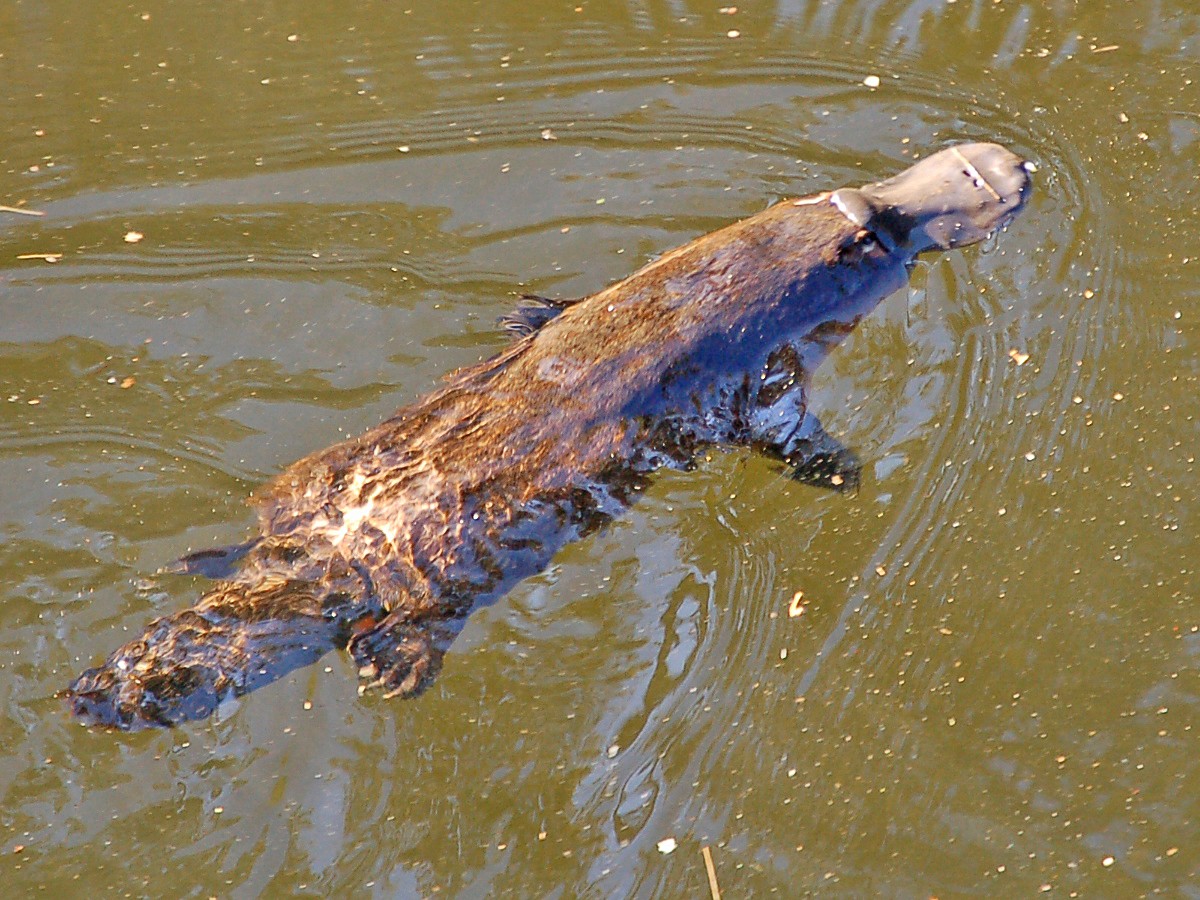Platypus
A species of Platypus, Also known as Watermole, Duckmole Scientific name : Ornithorhynchus anatinus Genus : Platypus
Platypus, A species of Platypus
Also known as:
Watermole, Duckmole
Scientific name: Ornithorhynchus anatinus
Genus: Platypus
Content
Description General Info
 Photo By Msdstefan , used under CC-BY-SA-2.0-DE /Cropped and compressed from original
Photo By Msdstefan , used under CC-BY-SA-2.0-DE /Cropped and compressed from original Description
With the four ant lines (Tachyglossidae), the animal belongs to the order of cloaca animals or Monotremata, which further only includes extinct animal species. The cloaca animals have a cloaca and are the only egg-laying mammals. Because of this characteristic, the animal is referred to in the discussion about the evolutionary relationship between mammals and reptiles.
General Info
Lifespan
10-17 years
Diet
Platypus primarily feeds on aquatic invertebrates, using its electro-receptive bill to locate prey in murky waters. A diet rich in shellfish, insects, larvae, annelid worms, and crustaceans is common.
Appearance
Platypus is a small to medium-sized, semi-aquatic mammal with a unique, duck-billed face, webbed feet, and a flat, beaver-like tail. It has a sturdy body covered in dense, waterproof brown fur, helping it to navigate chilly waters. Male platypus have venomous spurs on their hind legs. Its unusual features make it one of the most distinctive creatures in the animal kingdom.
Behavior
Platypus is a primarily solitary animal, foraging independently at night for aquatic invertebrates. Unique among mammals, the male uses a venomous spur for defense. They construct extensive burrows on riverbanks for nesting and home retreat. These remarkable behaviors evidence their adaptation to, and survival within, their aquatic environment.
Population
Decreasing